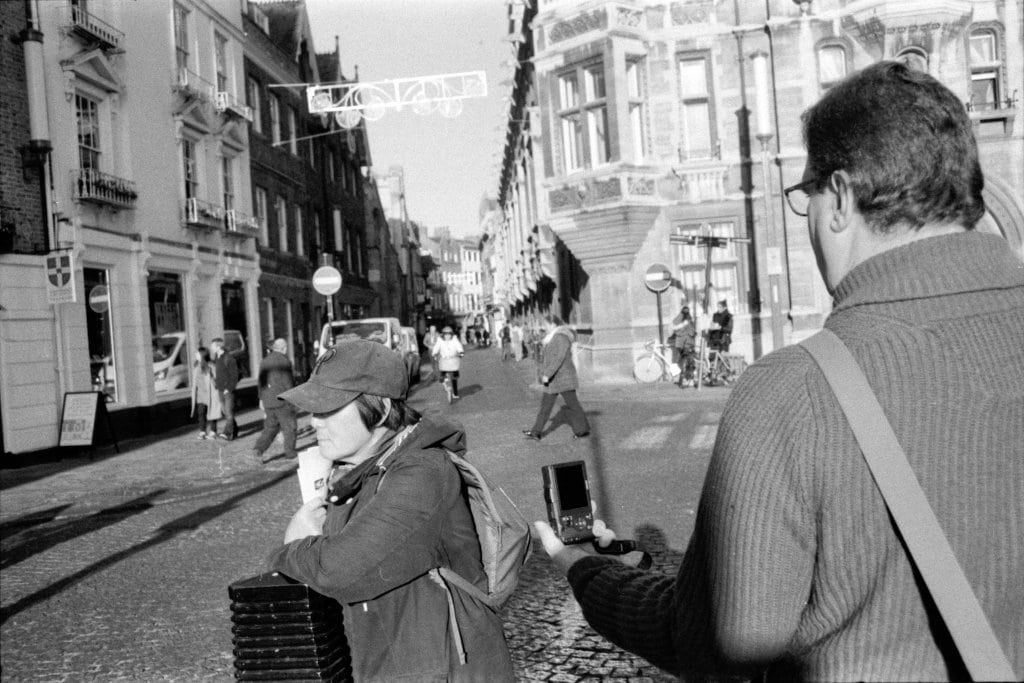A walk with John Hughes
Welcome to another article from the series of a walk with, this one featuring the street photographer John Hughes. The aim of each article is to provide some insight into the person from my meet up.
I was first introduced to John through Barney Maguire earlier this year and I’m so grateful for putting us in touch. After checking out his work on Instagram and then coming across his musings on his website, I felt compelled to get in touch. We chatted over a few periods and managed to join in a few of his regular Instagram live sessions to say hello. During late October 2019, we managed to get John on the podcast show and boy was it entertaining (link here). So it’s been great to find out about John, his work and life in this sense, but meeting in person adds something our generation appreciate.
The meet
We arranged to meet in Cambridge due to convenience for us both and within a minute of arriving, John set off and showed me around this historic place. He was in full-on street photographer mode, highlighting certain doors, windows and locations he has used before. The weather forecast was bright sun for the day, which meant great reflections and shadows.
The cameras
John had brought with him his trusty Ricoh GR, which on close up, looks like a cheap point and shoot camera. I think this is actually one of the most underrated features. In no way does this look remotely professional compared to other mirrorless or SLR cameras you have used in the past. Honestly, I don’t mean this in a bad way either, I mean who will suspect you are a talented photographer taking a picture with something so small?
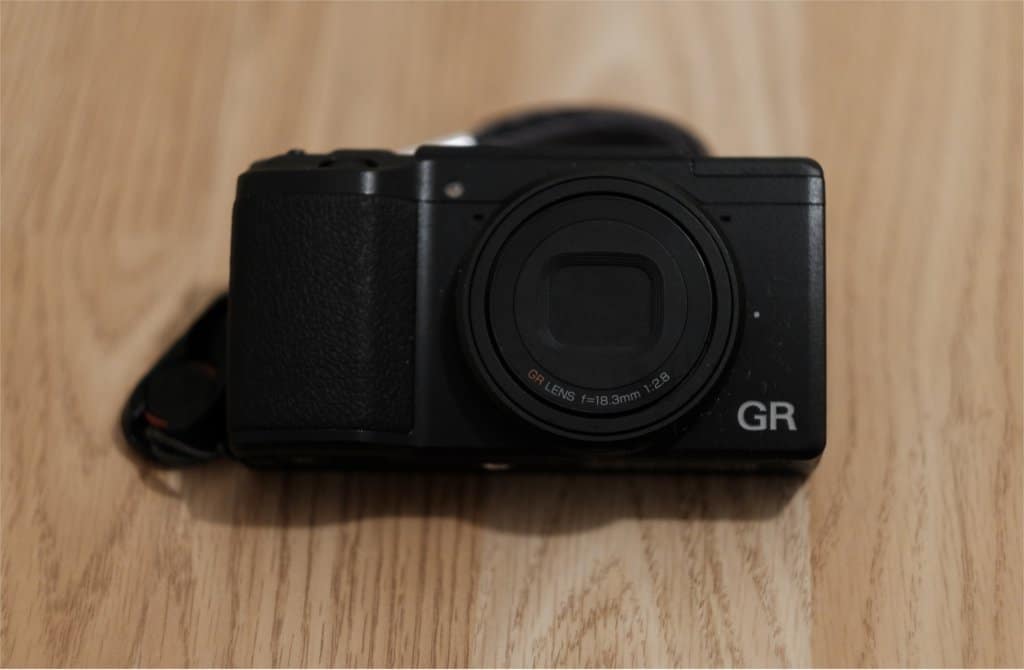
Thankfully John went through the way he uses it and why its one of his favourite cameras and you can see why it makes total sense. This idea of zone focusing is obviously not new but the half-press of the shutter is ingenious. Using the camera on burst mode you are bound to get a great picture (remember there is no viewfinder). After working with John, I think I can see the appeal of the camera and why it has this “iconic” reputation in the street world. Not having a viewfinder was initially scary to me, as I’ve never shot in this way (I’m a 35mm + medium format shooter), but actually you have an LCD so why do you need one?
As a completely opposite approach, I shot entirely film (hp5 rated at 800 iso) to give me a chance in the shadows. I was using my om2n with a 35-105 lens and using this at 35mm, which has one big downside, it’s a very heavy lens. It doesn’t affect my shooting since I’m used to a medium format weight but I prefer prime lenses like my trusty 50mm. Hopefully, the photos will be developed over Christmas for you to appraise.
The images
Anyway enough about technology, as it’s something both John and myself don’t really enjoy talking about. We are advocates of technology that is simple and effective, as we are not Luddites or scared of the modern world.
It’s quite funny seeing how other people work, so when you see John on the street you can see at no point is the adjusting settings on his camera. This also explains why he able to collect so many images and work so fast. He has the right camera for the job, he sets himself up, then the final elements for any photography are framing and timing (in my opinion).
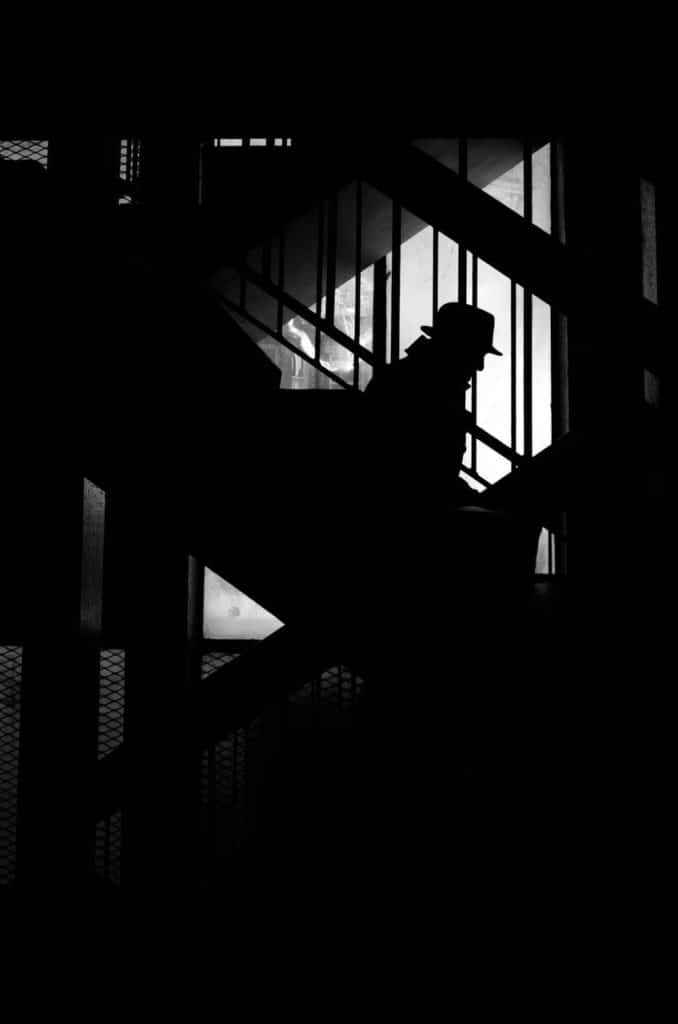
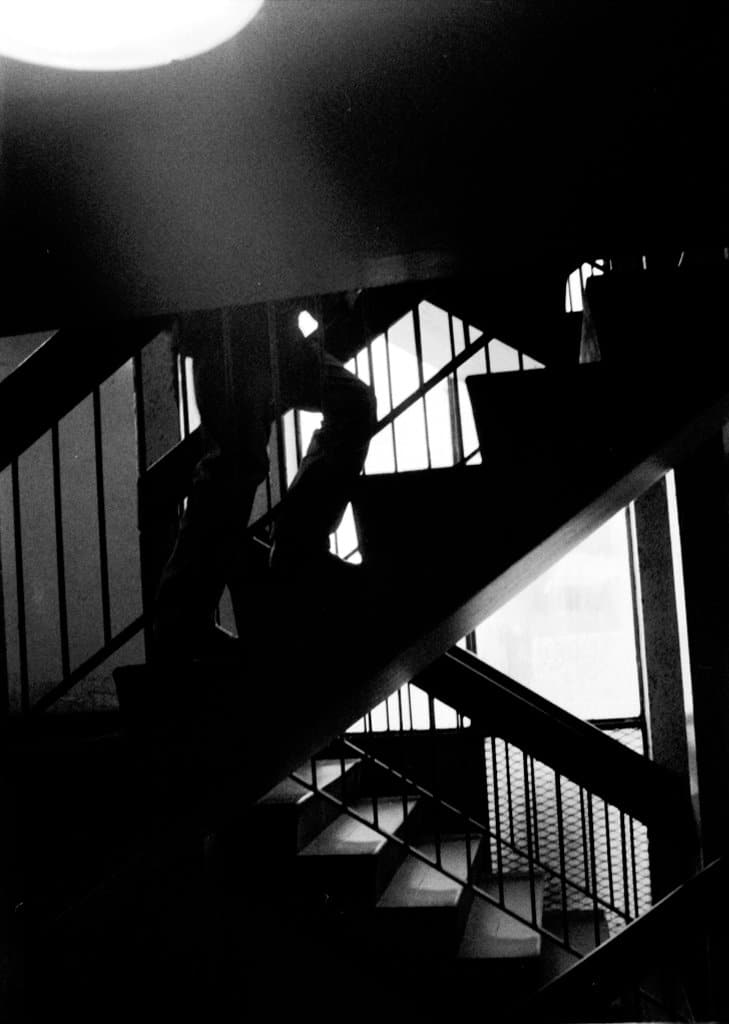
John’s logic
Technology can let you dow because if you are adjusting your settings you will miss opportunities. John has real evidence of this with his workshop and students, he even discussed how shooting film on the street for a beginner is probably not the right approach. When he first said this it was startling considering its part of my ethos. But once John explained why and provided evidence with one of his students it became clear.
You cannot be spending time finding dials and buttons on your camera, check light metering when there is a shot in front of you! You have to be ready, this sometimes only comes with experience and knowing your camera. So a little and fast camera like the Ricoh is a great way to concentrate on what matters – the image, the story in front of you.
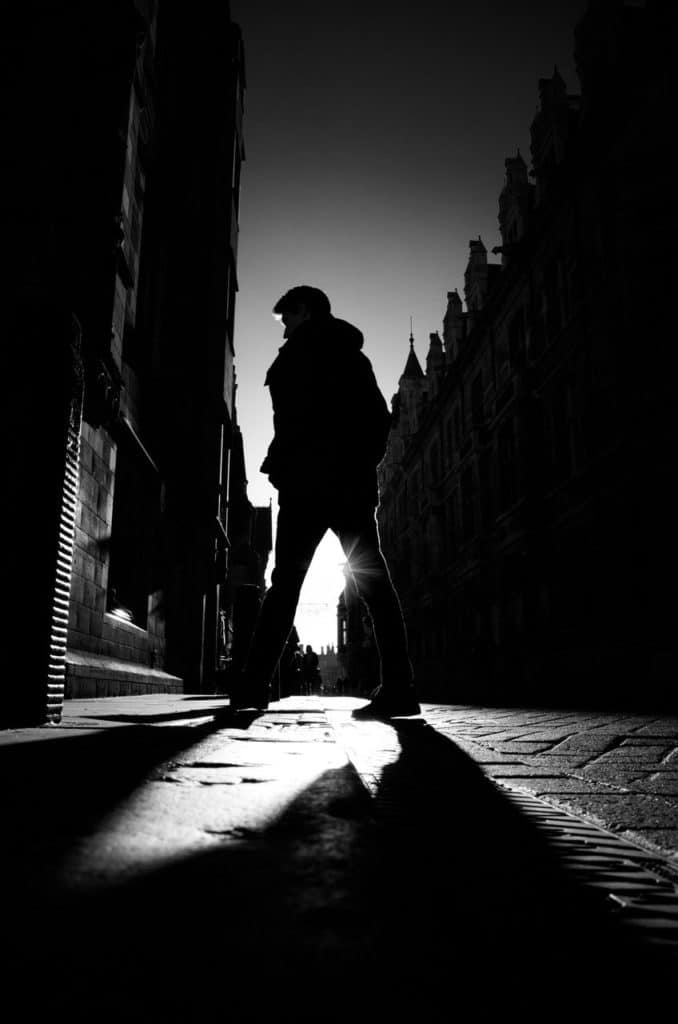
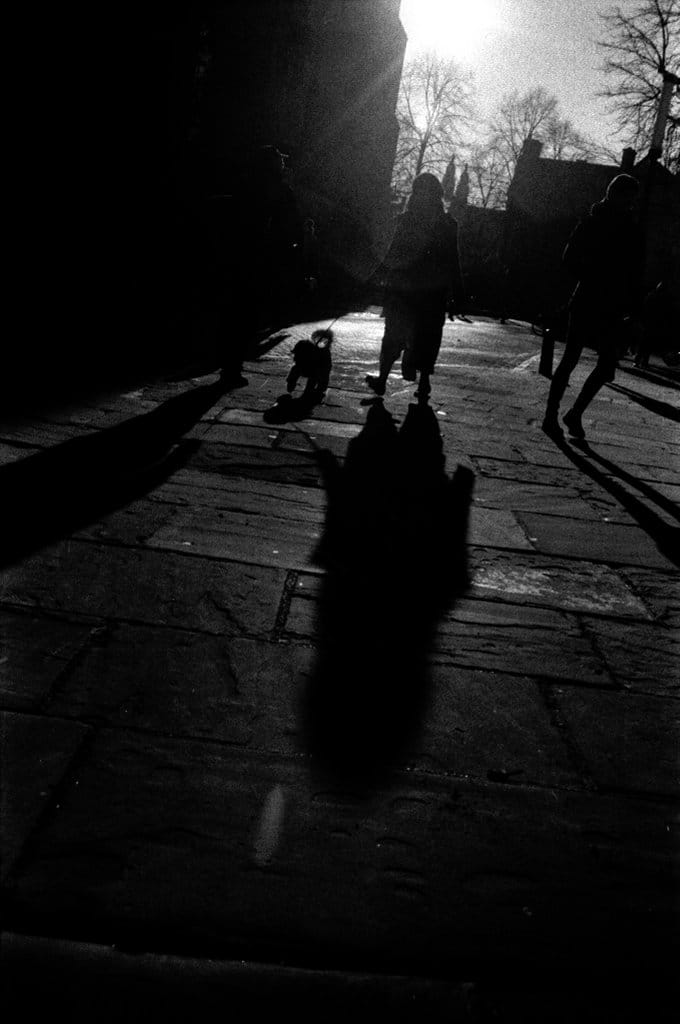
If you use John’s logic he has made a valid point, as using a digital camera will allow you to get instantaneous feedback on your work, which you can then try again and improve upon. But with film, you won’t know until you develop the film, so the chance has gone to shoot the same subject. This is even more apparent if you are doing a workshop or tutoring, you won’t have physically enough time to go back. This may impact your development as a photographer and hinder your ability to get a shot, so it is worth considering.
High noon
When starting up with photography you often hear about bad light and shooting at mid-day is a terrible time due to long shadows. However, with street photography, it’s a visual treat to explore. I have tried to use this in the past with reflections in windows and puddles of water but John raises the game here.
Because of his experience in Cambridge, he knows where the sun will be and knows the layout of the buildings so can estimate where is interesting. He spends his time doing something most photographers won’t do – shooting into the sun!
In the days past this may have been a style with lens flare, but if your clever you can use it to your advantage. You will often see John pausing as he’s seen long shadows of people or cobbled streets and he will pause and wait for what that elusive person to walk in frame. Another added benefit is if you are with someone else you could shoot the people observing laying on the floor, wondering what he’s doing!
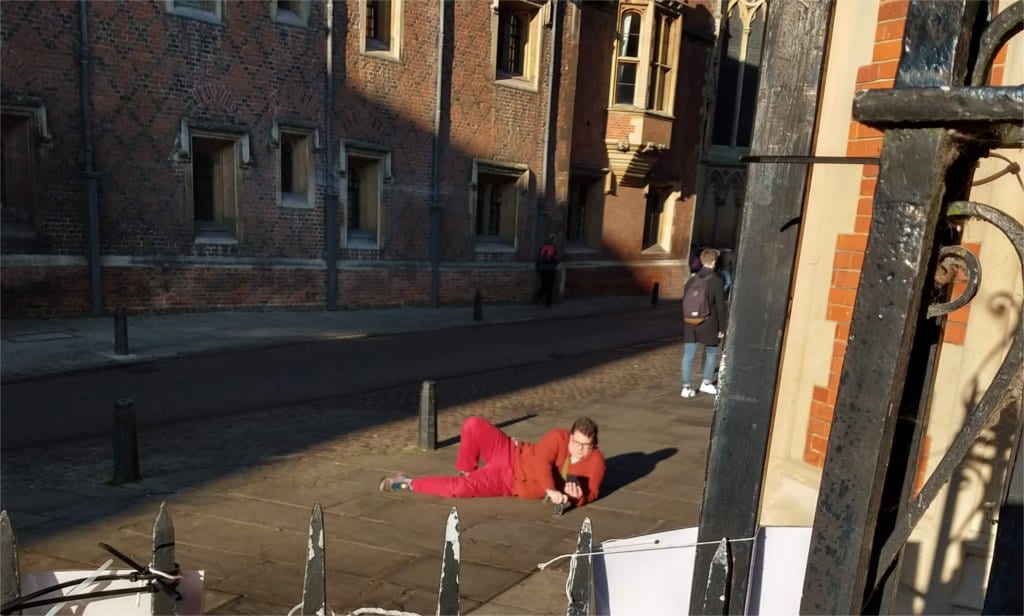
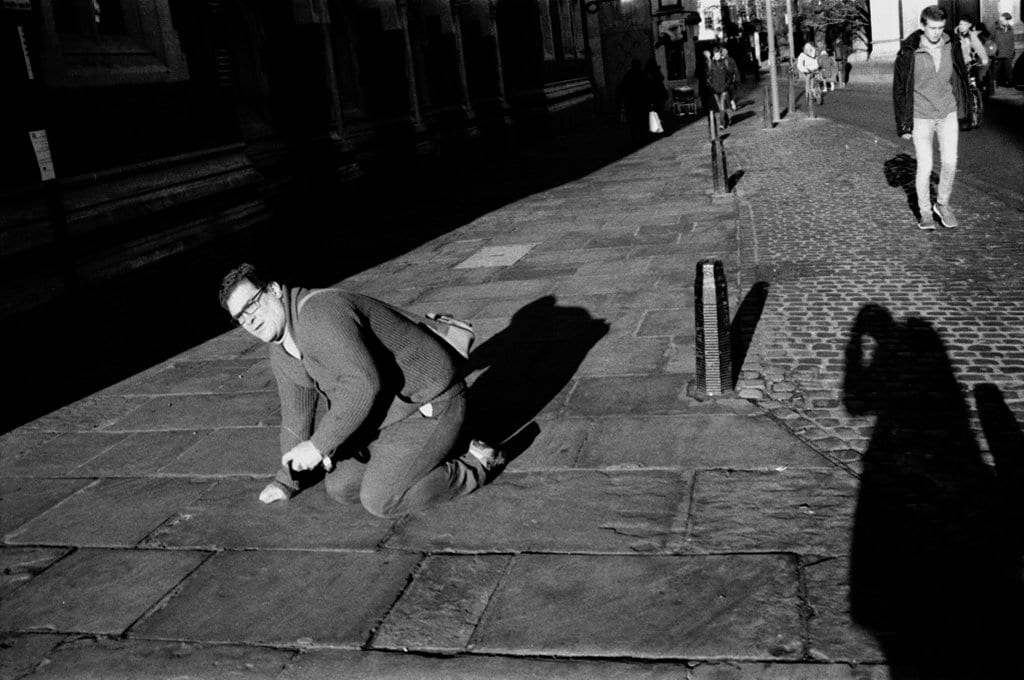
The photo above shows an example of John laying down on the street to achieve what he wanted in the photo below. Notice how he is capable of seeing differently.
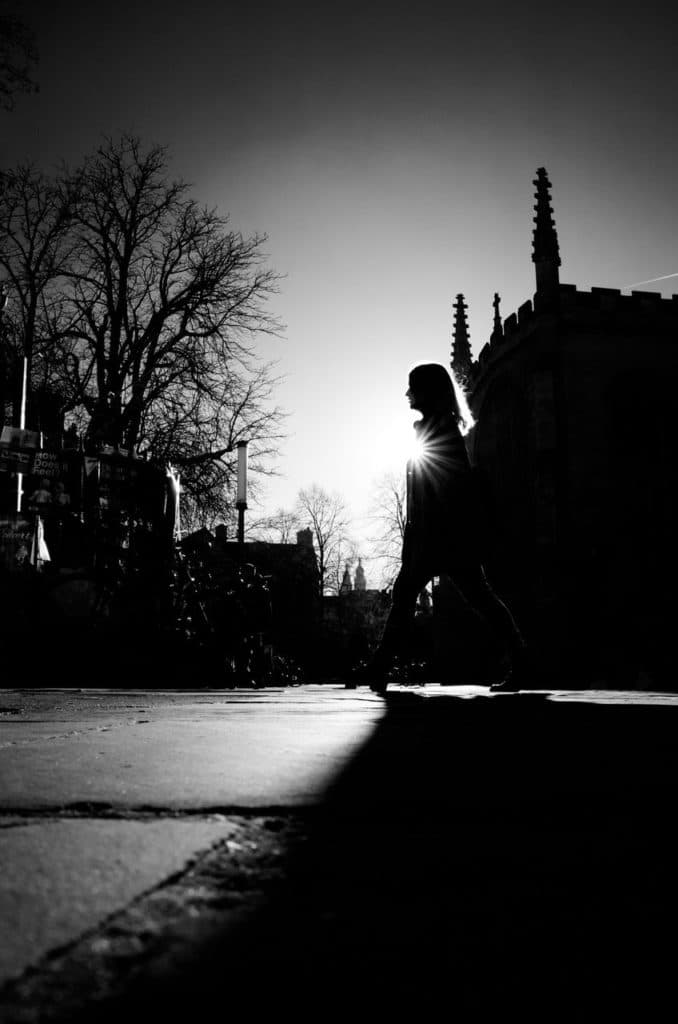
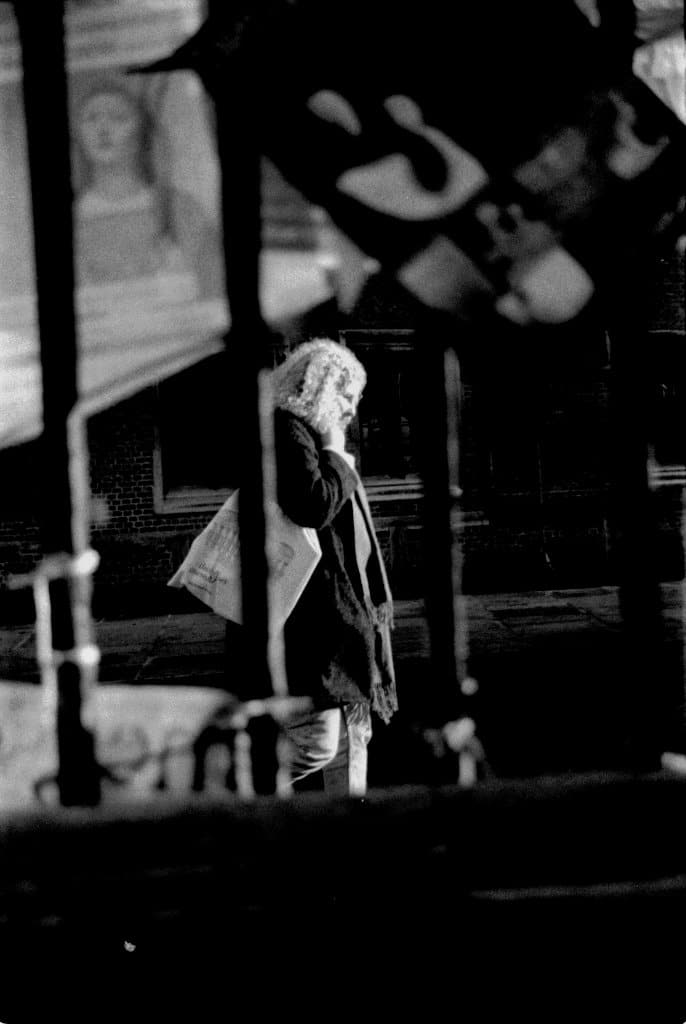
Finally
It was really cool to see a friend’s craft first hand and see them in person instead of online in that digital world. If you listen to John’s experiences with strangers and confrontations, he has some fun stories to tell.
People will wonder how John has “balls” to do this type of photography (I’m not lying he can often be no more than a foot off their face). I don’t think it’s about skill personally, some people are tough enough to not care. They won’t fret about invading people’s space, because they are not doing anything wrong.
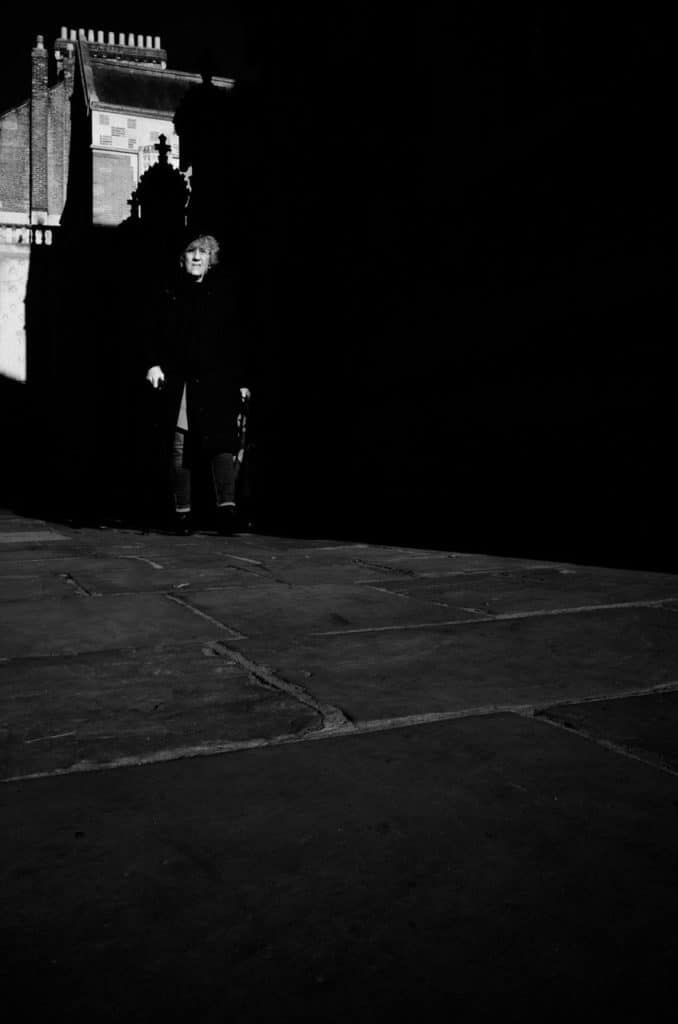
What I found interesting is that John is clearly one of the best street photographers I’ve come across. My mind is always active when meeting people and having this time in Cambridge helped me realise part of John’s psyche too.
It’s quite clear John has this vision of where to look and what will happen, which most of us won’t have or maybe won’t ever develop. You can see the passion in John’s voice when he talks about other photographers, bad light or other excuses. I truly believe this is the mindset of an artist of the highest order, who through no fault of their own just see things us mere mortals don’t. But luckily for us, John is on hand and teaches through one on one session and groups too. You can also tell it is something he is passionate about and why he focuses on the shot, not excuses and technology.
My final thought is I’m so glad John took the time to meet me and show me around Cambridge. I do urge you all to reach out to John’s he is always on social media and very responsive.
If you want to more about John I’ve included relevant links below too, for his podcast episode, his website and Instagram feeds. Don’t forget to check the website for more like this in the “a walk with” series.
Phlogger
Andy’s Gallery
So finally after a lot of waiting I managed to get the film developed and here’s a few examples of John in action.
Links
Website – https://www.johnhughesphotography.uk/
Podcast interview by Phlogger – http://phlogger.co.uk/interview-with-street-photographer-john-hughes/
Instagram – https://www.instagram.com/john.hughes.photography/
Newsletter
Why not sign up for the weekly email and get all the articles, news and podcasts delivered to your inbox? Subscribers get priority access to projects, competition and news.
[wpforms id=”12111″]


